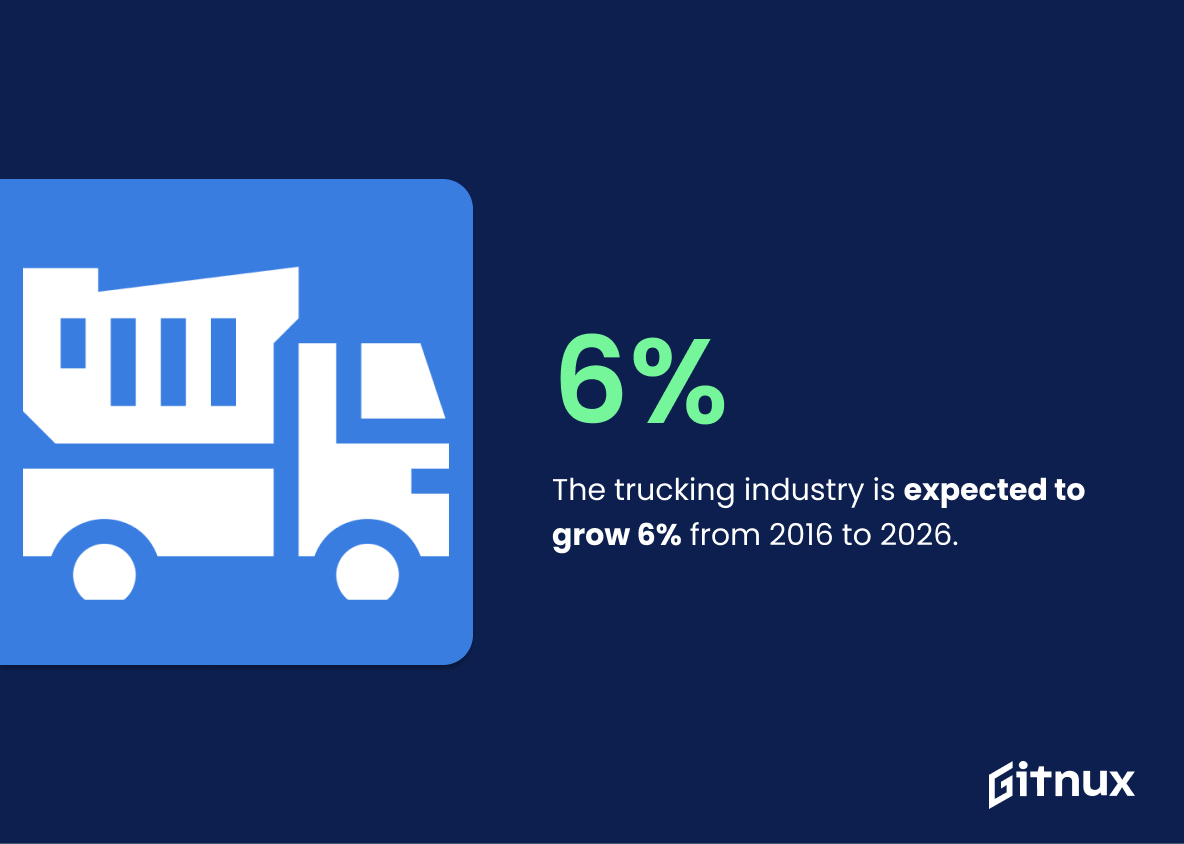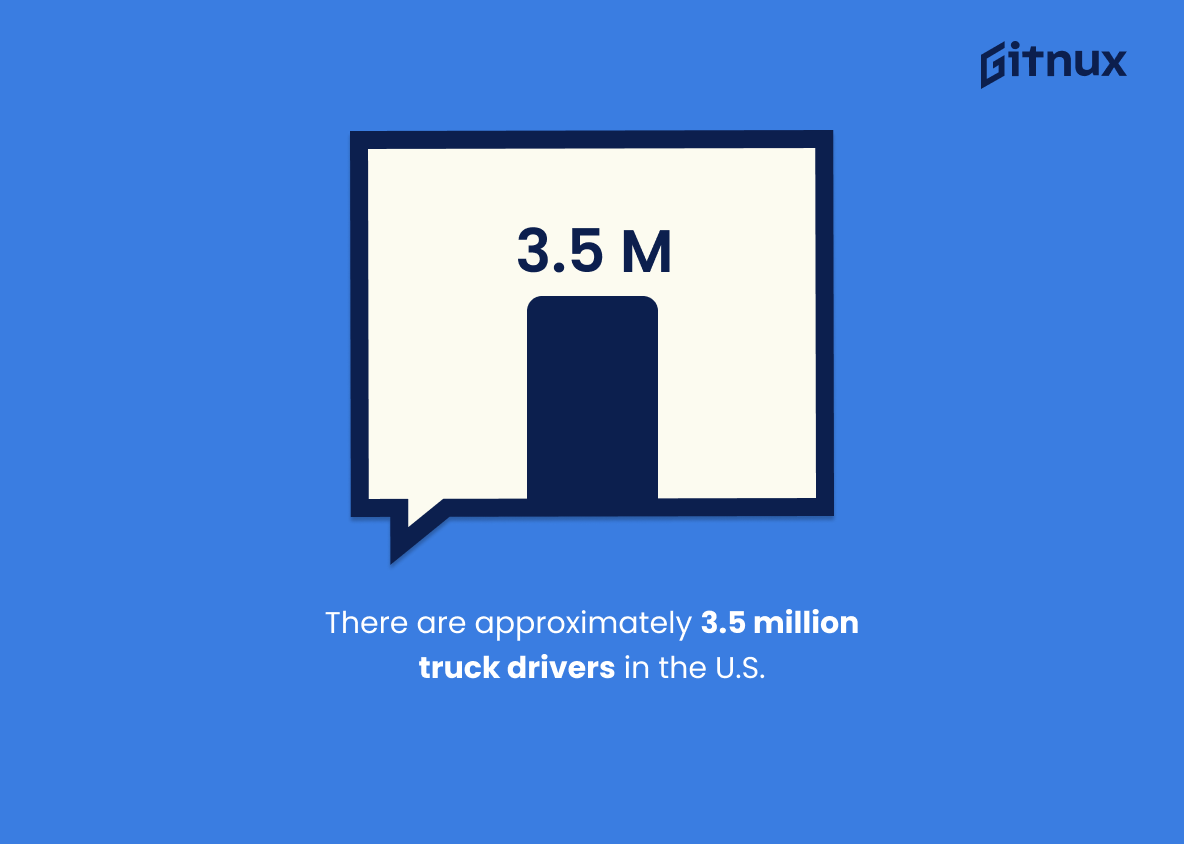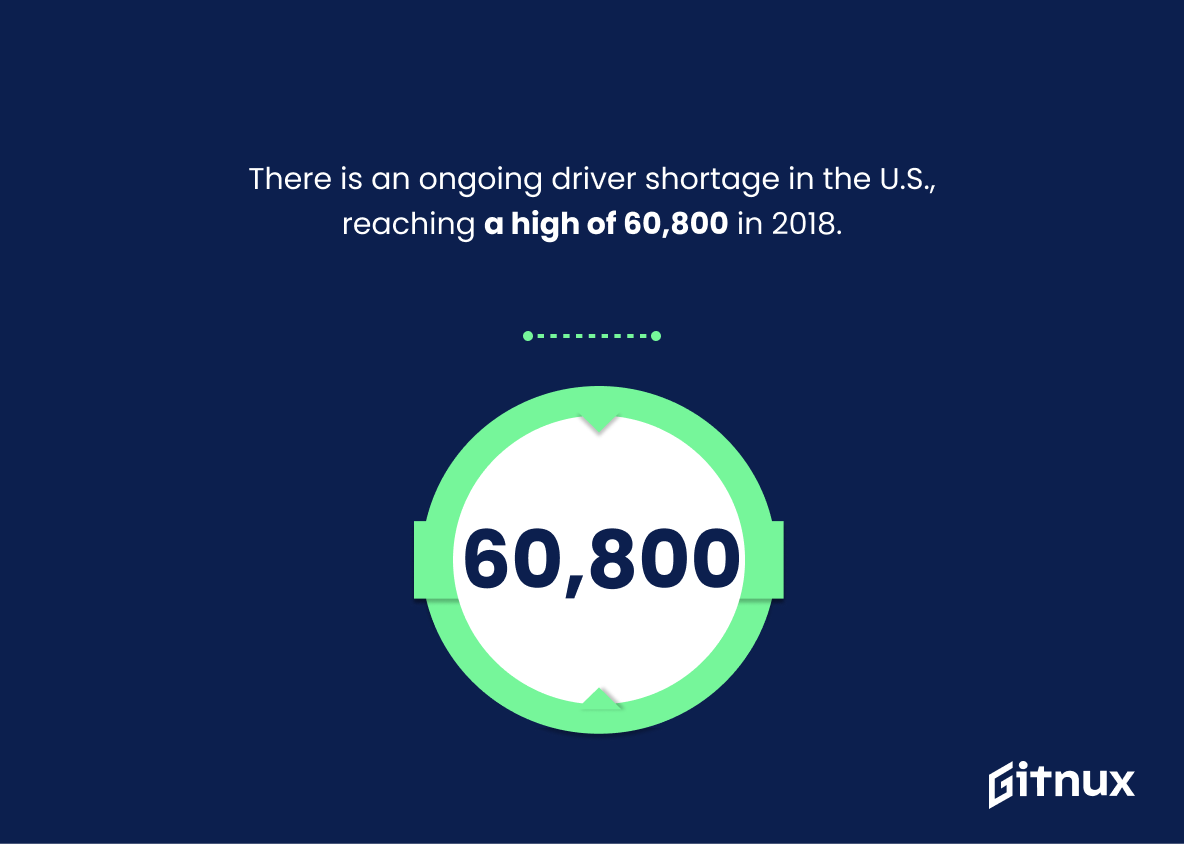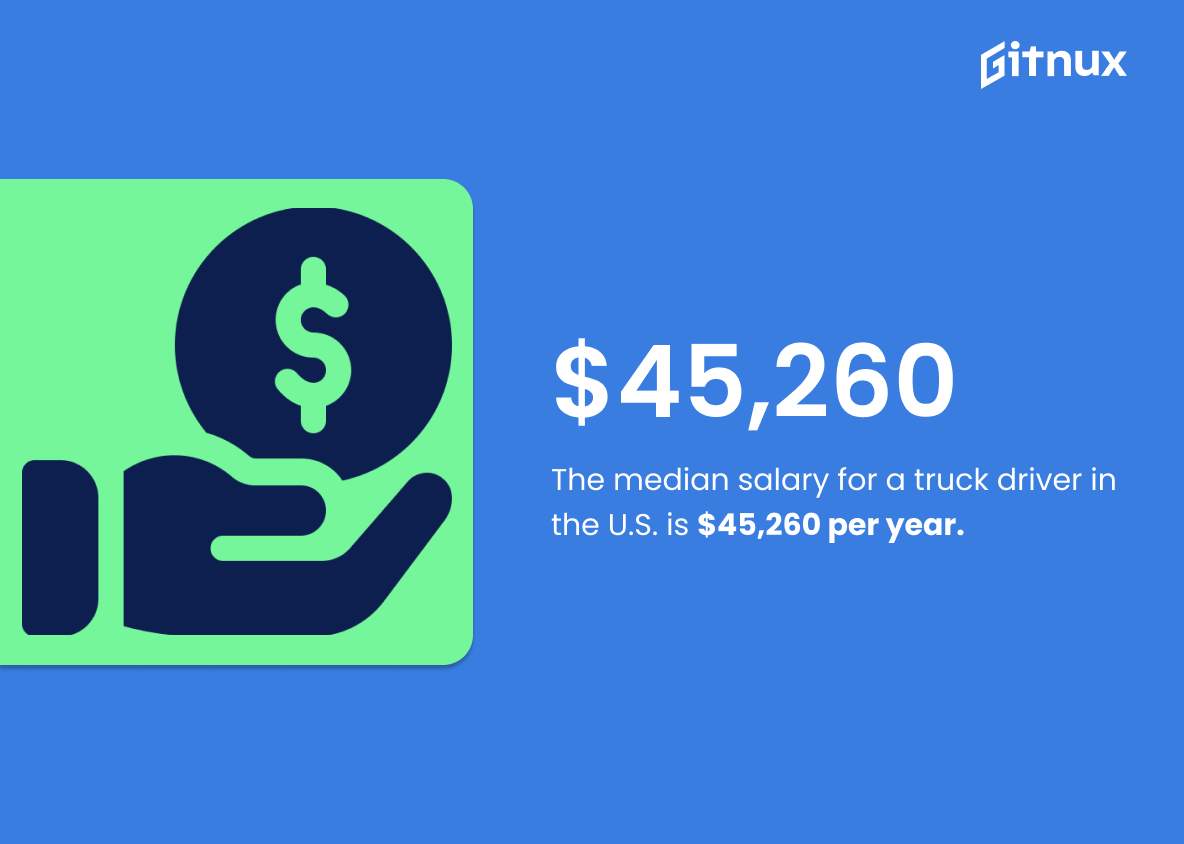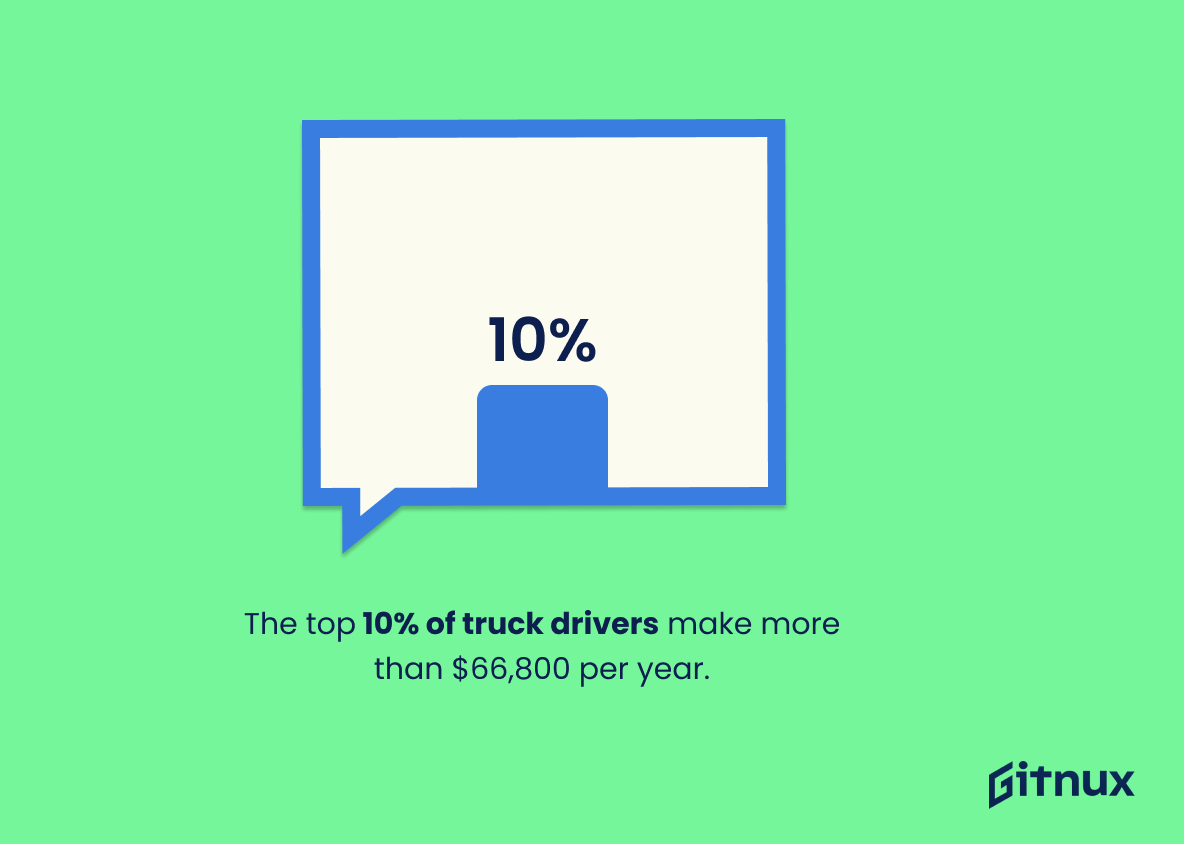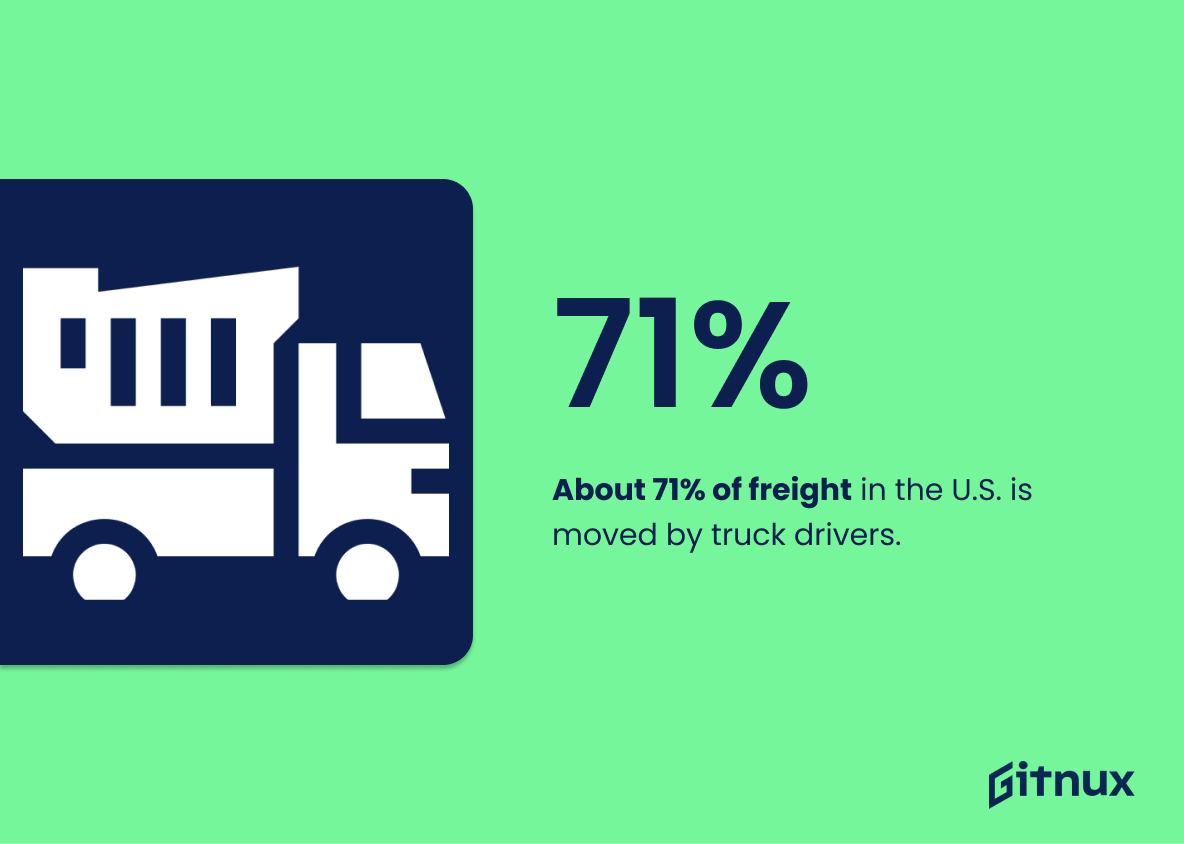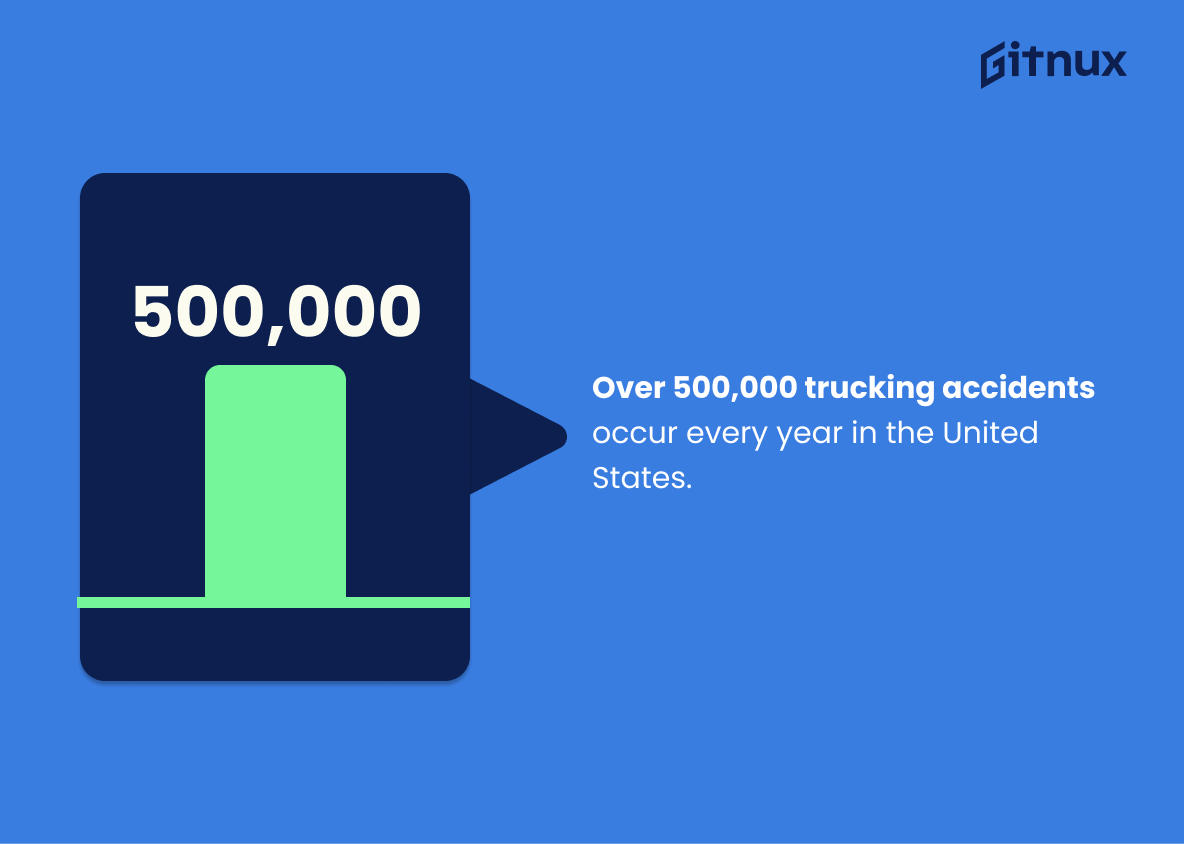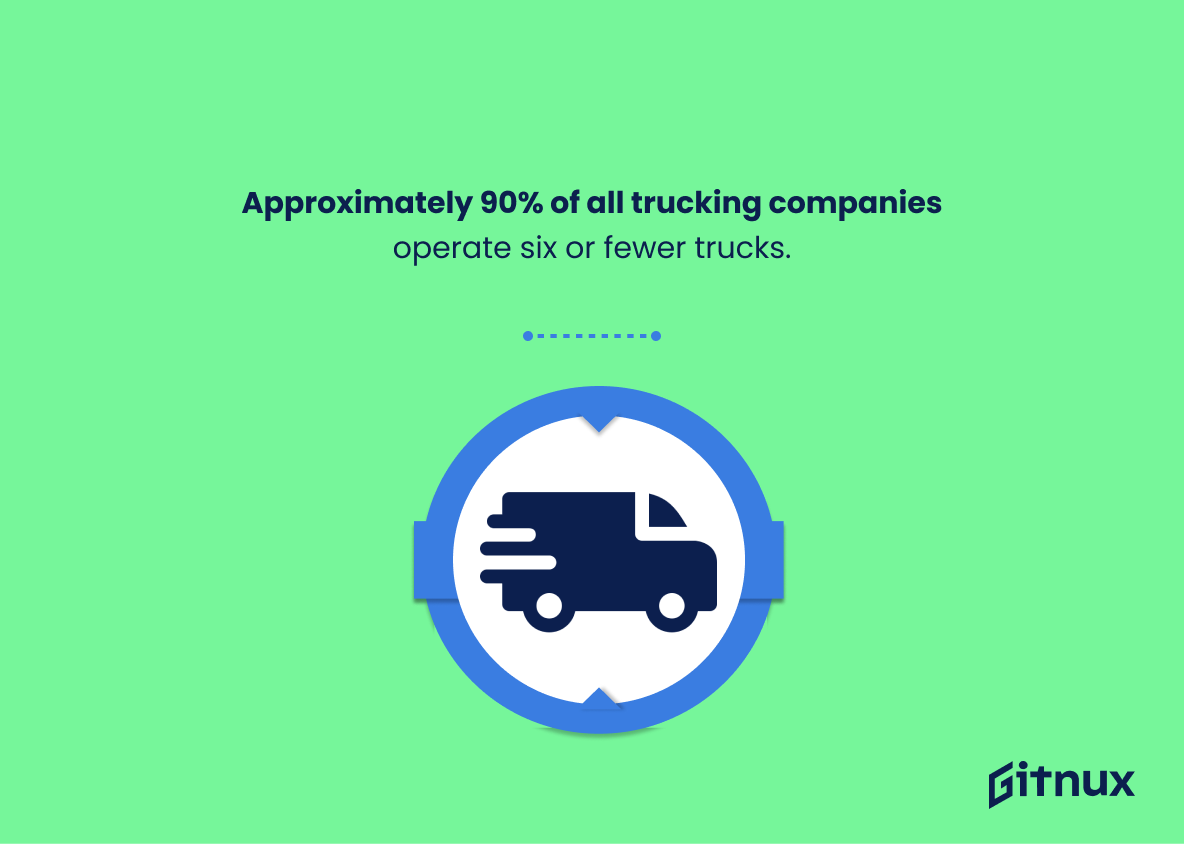As we traverse the pulsating arteries of commerce and industry – the highways, understanding the role of truck drivers becomes incredibly vital. They, indeed, are the lifelines keeping our economies thriving, delivering goods from coast to coast. Yet how much do we really know about these road warriors? This blog post attempts to shed light on some critical truck driver statistics, painting a detailed picture of their world that is seldom explored. From demographics to employment rates, from safety records to the impacts of technology— we’ll delve deep into the fascinating complexities of the trucking industry. Buckle up and join us as we embark on this data-driven journey into the realm of truck drivers.
The Latest Truck Driver Statistics Unveiled
The trucking industry is expected to grow 6% from 2016 to 2026.
In the bustling world of transportation, the projected growth of the trucking industry by 6% from 2016 to 2026 plays a pivotal role, particularly when considering truck driver statistics. Imagine the trucking industry as a vast journey across a nation, and this growth percentage as a roadmap—signaling not just the future direction but also the pace of the trip. This key figure signifies increased demand for truck drivers, expanding opportunities for jobs, and suggests potential for higher income in the decade. Therefore, anyone in, or contemplating joining the trucking industry, would be intrigued to grasp this statistic, as it might be their beacon for strategic career navigation and planning.
There are approximately 3.5 million truck drivers in the U.S.
Feeling the pulse of the American roadways, it wouldn’t be hard to spot that the veins of trade and commerce are bustling with the lifeblood of approximately 3.5 million truck drivers. In the vivid tapestry of our nation’s vehicle-related occupations, these truckers form a hefty and impactful slice. They serve as a testament to the magnitude of the freight transportation network in the U.S., and offer a perspective for comparing the scale, trends, and struggles of this profession vis-à-vis the entirety of the labor force. Thus, unravelling the tale of our ‘freight knights’ becomes an invaluable aspect of a truck driver statistics blog post.
1 in 9 truck drivers are independent, a majority are lease-purchase operators.
Injecting this compelling piece of data into a blog post about Truck Driver Statistics provides a nuanced perspective to the reader. It distinguishes the diverseness of the truck driving profession, specifically highlighting that not all truck drivers are tethered to established companies. With 1 in 9 truck drivers identifying as independent, it demonstrates a significant slice of the profession valuing control over their own work hours and routes. Furthermore, the blend of mainstream lease-purchase operators indicates a sway towards entrepreneurial spirit within the industry. Thus, discussions about legislation, income dynamics, job satisfaction, or regulation compliance can be engaged in with a more profound and complete perspective.
Truck driving is the most dangerous occupation in the U.S. with 918 fatalities in 2016.
Highlighting the significant figure of 918 fatalities associated with truck driving in the year 2016 undeniably accentuates the intense risks intrinsic to this occupation. In a blog post centered around Truck Driver Statistics, this chilling data point thrusts into the spotlight the perilous nature of the job, infusing a sobering realism into the discussion and drawing the readability of the audience. Outlining such daunting odds can build up a compelling narrative towards advocating for improved safety measures and regulations within the industry. Additionally, the awareness could lead to concrete steps towards enhanced training and better support for the truck drivers, ultimately helping them navigate the rigors of their demanding occupation.
There is an ongoing driver shortage in the U.S., reaching a high of 60,800 in 2018.
Shedding light on the underlying urgency of the prevailing driver shortage, the statistic of 60,800 vacant truck driving positions in the U.S. in 2018 amplifies the scale of the challenge faced in the transportation industry. Within the narrative of a blog post on truck driver statistics, this figure acts as a compelling catalyst, stirring up conversation on the growing demand-supply gap. It not only underlines a potential strain on the logistics framework but also heralds an opportunity for job seekers in the truck driving sector.
The median salary for a truck driver in the U.S. is $45,260 per year.
The heart of any exploration into Truck Driver Statistics, the median salary of $45,260 per year, serves as the vital pulse that energizes our understanding of the industry. Not just a random figure, it paints a vivid picture of the financial reward for those who navigate the life of a truck driver, underlining what might be a potential drawing factor for new entrants.
Imagine straddling the continent, clocking miles while others sleep, and at the end of the day when diesel dust settles on your dashboard, $45,260 per year is your reward. It is the tangible affirmation of the truck driver’s sweat, skill, and miles logged. This figure shines a spotlight on the livable compensation that truckers earn in return for their hard work.
Moreover, amidst a sea of numbers and statistics, this median salary helps us grasp the midpoint of the monetary spectrum that truck drivers span. It creates a fiscal landmark that tells us half the drivers earn above this amount, while half earn less. This provides a crucial comparison tool for those pondering their place on the roads of the driving industry or companies preparing their compensation packages.
The top 10% of truck drivers make more than $66,800 per year.
Treading into the territory of top-tier earnings unveils an intriguing facet of the truck driving industry. Those steering their careers into this upper echelon, the highest 10% of truck drivers, reap financial rewards exceeding $66,800 per year, painting an enticing picture of the potential prosperity within this sector. This numeric nugget showcases the lucrative potential that could be unlocked by those with the skills, dedication, and determination to navigate the long haul of a career in truck driving. Ultimately, this statistic shapes not only the wage narrative but also ignites ambitions within aspiring truck drivers, encouraging them to reach for the higher rungs of the industry’s earnings ladder.
The average age of truck drivers in the U.S. is 55 years old.
Unveiling the mask of ‘the average age of truck drivers in the U.S. being 55 years old’ brings out a significant piece of the puzzle in understanding the trucking industry. Peering into this statistic dives straight into several underrated but critical factors. Firstly, it underscores the potential of an imminent labor shortage in the industry as many drivers are possibly on the brink of retirement. Similarly, the insight paints a picture of the industry’s demographic profile, indirectly pointing to the need for hiked up recruitment efforts targeted towards younger individuals. Additionally, this revelation could translate to more profound implications on safety regulations, given that age might directly impact drivers’ physical health and response times. This statistic truly shines a light on the heart of the truck-driving sector, crashing head-on into the realities faced and the multitude actions needed for its future stability.
Women make up only 6.2% of truck drivers.
Peering into the world of truck driving, an industry often visualized as a man’s world, unfurls an interesting statistic: only 6.2% of the workforce are women. Exposing this data serves two crucial functions in a blog post centered on Truck Driver Statistics. Firstly, it breaks down preconceived notions, illustrating that a female presence, albeit small, certainly exists in this profession. Secondly, it unveils a potential opportunity for industry growth and diversification. By focusing on recruitment strategies targeting women, the trucking industry could tap into a currently underserved demographic to combat labor shortages often faced.
Long-haul truck drivers may be on the road for up to 12 hours a day.
In the echoing rhythm of 18 wheels on the highway, roars a riveting fact; long-haul truck drivers could be navigating the arteries of commerce for up to 12 hours a day. This statistic plays a pivotal role in the narrative of a blog post about Truck Driver Statistics. It’s the backbone, the load-bearing pillar that elucidates the demanding nature of this profession, shedding light on the drawn-out hours that these road warriors spend behind the wheel. It stirs curiosity, prods readers to further explore the implications – physical, psychological, social – tied to such prolonged periods on the road. Ultimately, this measure serves as a compass, guiding the reader through the broader landscape of issues impacting the truck-driving community.
About 71% of freight in the U.S. is moved by truck drivers.
Highlighting the fact that approximately 71% of U.S. freight is transported by truck drivers speaks volumes about their crucial role in the robust continuity of commerce and economy. Painting a picture of the not-so-obvious enormity of the trucking industry, this statistic underscores an indisputable dependence on truck drivers for supply chain functionality. Intertwining itself into the fabric of nearly every industry, the figure boldly underlines the sheer durability of over-the-road freight movement and truck drivers’ irreplaceable contribution to market fluidity. Imagine the systemic interruption if this vital artery of commerce were to cease. Therefore, in a blog post on Truck Driver Statistics, this statistic not only underscores the importance but also amplifies the very essence of the profession.
The trucking industry employs one out of every 16 people working in the United States.
Illuminating the vast impact of the trucking industry, it’s striking to note that the umbrella of this industry shelters one in every 16 working Americans. This compelling ratio underscores the deep relevance and breadth of truck driving, transforming it from a mere sector into an interwoven thread in the nation’s employment quilt. As we delve into truck driver statistics on this blog, this context plays a critical role, setting the stage to understand the consequential part trucking plays in shaping the economic and employment landscape of the U.S. This industry’s health, trends, and challenges are not just influencing a small niche, but indeed a significant fragment of America’s working populace. As we examine figures and facts about truck drivers, remember, their story potentially touches approximately 6.25% of the working lives around us.
In 2019, truck accidents caused over 4,000 fatalities.
This grim revelation forms a poignant cornerstone in our blog post on Truck Driver Statistics, intensely highlighting not only the magnitude of the hazard posed by truck accidents but also underscoring the compelling need for re-evaluating safety measures. Astoundingly, the loss of more than 4,000 lives in 2019 positions the trucking industry’s danger under a glaring spotlight, virtually sounding an alarm for immediate attention to stringent driving protocols, rigorous driver training, and enhanced vehicle safety features. Truly, the gravity of this statistic pivots our conversation towards essential and lifesaving strategy adjustments in the trucking world.
Over 500,000 trucking accidents occur every year in the United States.
Shedding a sharp beam of light on the subject of Truck Driver Statistics, it’s imperative to illuminate the stunning revelation of the alarming situation – over 500,000 trucking accidents blight our roads annually in the United States. Like a barometer measuring the pressure in the industry, this figure not only defines the scale of risk and the burden shouldered by truck drivers, but also underscores the pressing need for enhanced safety regulations and diligent training programmes. The striking number provides the hard-hitting reality about the trucking industry, instructing policy makers, road users, and the drivers themselves about the profound significance and urgent need to address the existing challenges.
Approximately 90% of all trucking companies operate six or fewer trucks.
Unraveling the threads of the trucking industry reveals a staggering reality: roughly nine out of ten trucking companies have a fleet no larger than six trucks. This statistic casts a fresh light on the intricate fabric woven by these small-scale transporters. They silently dominate the backbone of our cargo transportation network, with their importance often understated. By introducing this statistic in a blog post about Truck Driver Statistics, it offers readers a new perspective on the sector’s landscape, highlighting the truth about trucking companies – they’re mainly not colossal entities, but rather small, hard-working teams. Such insights give depth to the rhetoric, supplying context, and helping build a better understanding of the industry which could be instrumental for truck drivers navigating their careers or potential entrants considering their future prospects.
Conclusion
As we draw this enlightening discussion about truck driver statistics to a close, it’s clear that this often overlooked profession is a cornerstone for our everyday lives. Whether we’re talking about miles covered, compensation received, or the demographic shifts creating waves within the industry, these brave individuals continue to fuel our economies and ensure the smooth running of our societies. Creating awareness about the realities and challenges they face is crucial in improving conditions and attracting more people into this vital profession. The dynamics may change with time, technologies may come and go, but truck drivers will always remain an indispensable part of our distribution and supply chains. Armed with the knowledge of these compelling statistics, it becomes easier to appreciate the vast scope and importance of the truck driving industry and the individuals who keep it running.
References
0. – https://www.www.alltrucking.com
1. – https://www.www.fmcsa.dot.gov
2. – https://www.hdstruckdrivinginstitute.com
3. – https://www.www.ntsb.gov
4. – https://www.www.bts.gov
5. – https://www.www.copilotsearch.com
6. – https://www.money.usnews.com
7. – https://www.www.bls.gov
8. – https://www.www.trucking.org
9. – https://www.www.iihs.org
